Sugar gliders bred in captivity come in many different colors and morphs. There are dominant traits and
recessive traits. With dominant traits, one parent needs to physically display the trait in order to
produce offspring with that trait. If at least one parent does not visually display a trait, then they cannot
pass it on to their offspring. Offspring cannot carry the gene for a dominant trait unless they visually
display that trait. With recessive traits, both parents must carry the gene (or het) in order to produce
offspring with that specific trait. However, neither parent actually has to visually display that trait. They
can carry the het without visually displaying it. If only one parent carries the het, they can still produce
offspring who also carry the het, but they will not be able to produce offspring that visually display the
recessive color. The different dominant traits can coexist together (example: white face mosaic). The
recessive traits can also coexist with the dominant traits (example: cremino mosaic).
Dominant Colors/Traits
Mosaic
Mosaic sugar gliders are probably the most unique and varied of all the gliders. When it comes to sugar
gliders, mosaic means that they have white breaking up their otherwise gray body. This can range from
white hands to nearly pure white gliders. Several other traits come under the heading of mosaic:
pied/piebald, ringtail, marbled, reverse stripe, cow ears and split face/asymmetrical face. Any mosaic
can produce a glider with any of the mosaic traits, even if they don’t display the trait. For instance, non-
ringtail mosaic gliders can produce ringtail offspring.
–Pied/Piebald is a mosaic trait in which there is a dark gray/black patch overtop of the white on a
mosaic glider. These are typically seen in mostly white mosaic gliders. If the spot is large, then we refer
to these as “wow pied”. Piebalds are somewhat rare. Wow pieds are quite rare.
–Ringtail is just like it sounds. Rings can be white, gray or black and there can be one or many rings.
More faint rings may powder out as the glider ages, while bold black and white rings will often stay
pronounced throughout adulthood.
–Marbled mosaics have ‘marbling’ of gray and white on their backs.
–Reverse stripe sugar gliders have white dorsal stripes on their back instead of the standard black. They
may just have a partial reverse stripe or full reverse stripe.
–Cow ears are pink or white ears that have black or gray spots on them. Sometimes only one ear is a
cow ear.
–Asymmetrical face is exactly what it sounds like—the two sides of the face are not symmetrical. An
example of this is one eye having dark eye liner around it while the other doesn’t. Split face varies in
that it is more pronounced and there is typically a line going down the center of the face dividing it.
Often with split face, one side is dark and one side is light.
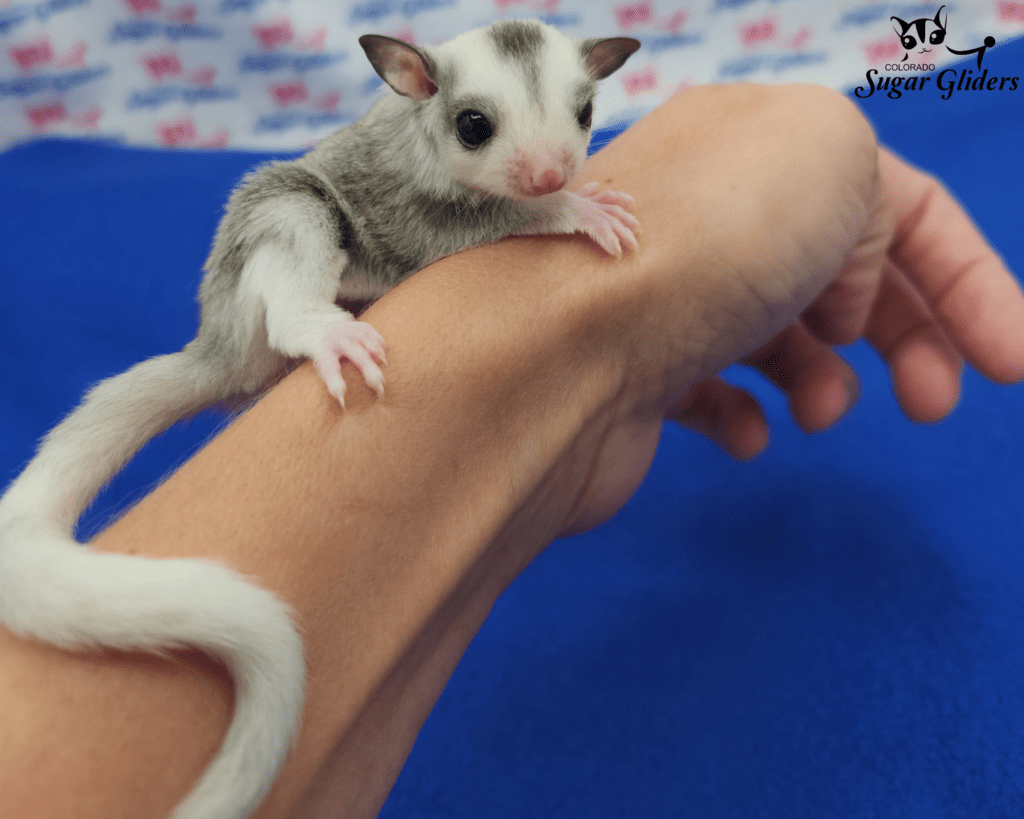
Black Face Black Beauty
Black face black beauty and black face are often used to describe the same thing. Some people reserve
black face black beauty to describe the darker black face gliders, but for our purposes, we are going to
use the terms interchangeably. Black face gliders are characterized by lack of full eye rings around their
eyes. This often gives them an ‘angry’ look. While black face gliders are often darker than their gray or
standard mosaic counterparts, and they may continue to get darker with time, they do not have to be
dark. They can be varying shades of gray. The black face trait can even exist in other colors of gliders,
such as platinum or carmino. Black face can sometimes be difficult to identify in mosaics with
predominantly white faces. The only way to tell may be pairing to a non-black face glider and seeing if
they produce black face offspring.
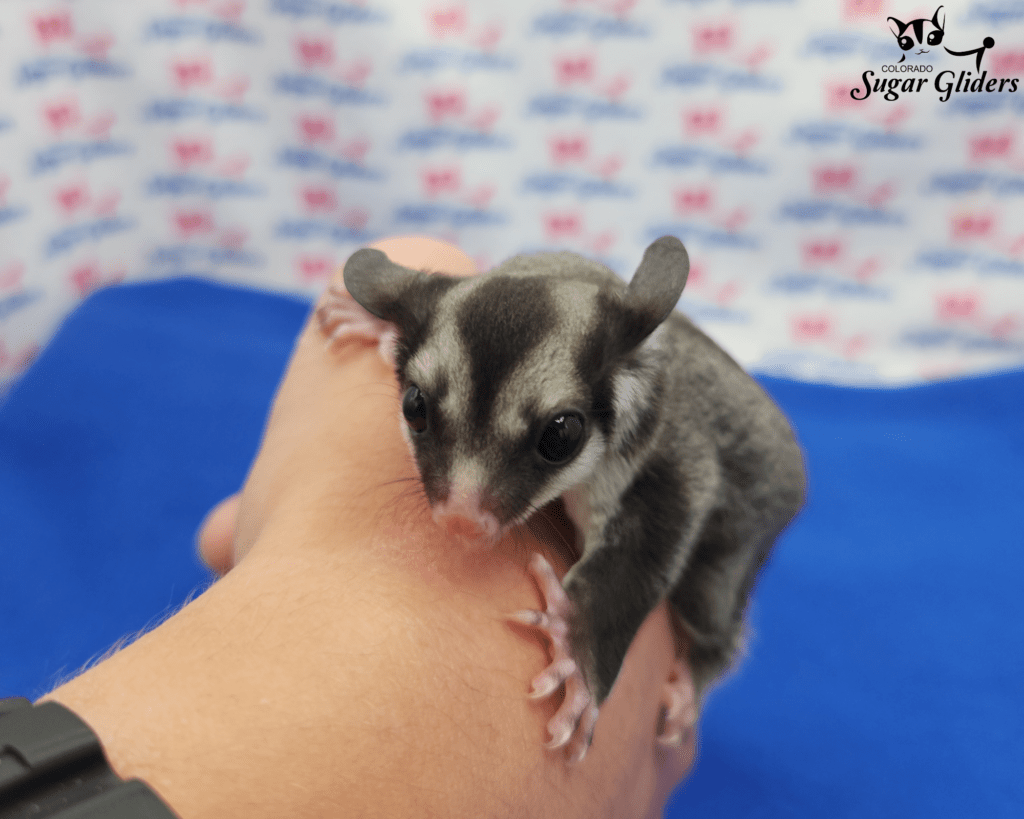
White Face
White face sugar gliders are characterized by the lack of dark bars under their ears. This gives them the
appearance of a ‘white’ face. White face comes in different shades. Some look nearly identical to
standard grays, minus the under-ear bar. Some may be blonde or lighter gray in color. Some lines of
white face gliders have split diamonds on their foreheads. White face use to often be referred to as
white face blonde. White face can coexist with many other traits, but it is easily masked by traits such
as mosaic, so sometimes it goes undetected.

True Abby Curly
True Abby Curly sugar gliders have curly fur, as their name suggests. They may just have curly fur on
their tails, or it may cover most of their body. Because curly is a dominant trait in sugar gliders, a parent
only has to possess minimal curls to produce full curly offspring. This is not a trait that can just be
produced in any sugar glider however. There is currently only one line of sugar gliders (True Abby Curly)
that produce true curly haired gliders. Occasionally, you may see a baby sugar glider from a non-curly
line that appears to have waves/curls in its tail hair, but these will fade as it ages. Curly gliders can be
any color.
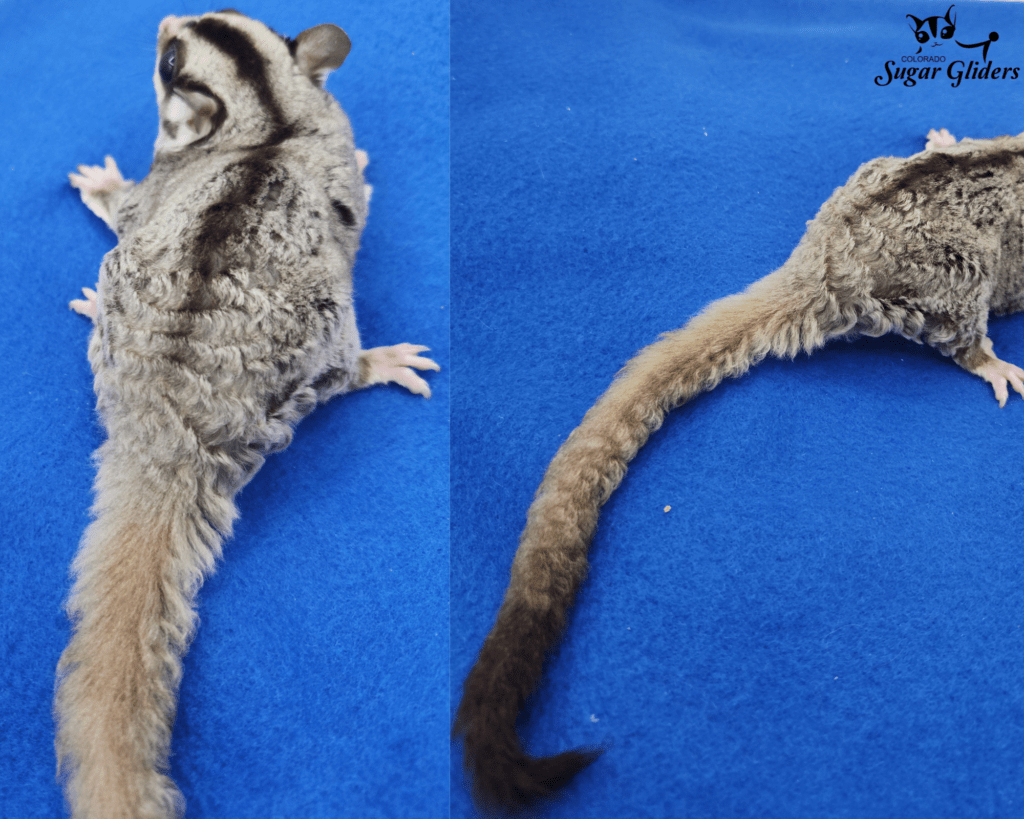
Recessive Colors
Cremino
Cremino sugar gliders are a cream color with blonde dorsal stripe and tail tip. Creminos also have red
eyes. This may vary from bright red to very dark, but they are often a garnet color. Creminos can be
very light colored with a slightly darker stripe, or more of a blonde with an almost reddish/brown stripe.
Typically the darker ones with reddish stripes are referred to as strawberry creminos. Mosaic creminos
will not have white patches. Instead, they are typically identified by having part of their tail tip be their
lighter body color, rather than the darker color of their stripe. Part of their stripe may be light colored as
well.

Leucistic
Leucistic sugar gliders are pure white with black eyes. They can sometimes be confused with white
mosaics. Typically leucistics will have pink water lines around their eyes, while white mosaics will have
black or gray water lines. White mosaics may also develop shadowing or a few dark hairs as they age.
Leucistics will always be pure white. The only variation to this is that if you have a mosistic (mosaic +
leucistic) sugar glider, they may develop light gray spots on their ears. This is more the skin pigment on
their ears changing. Leucistic gliders will not have any dark hairs.
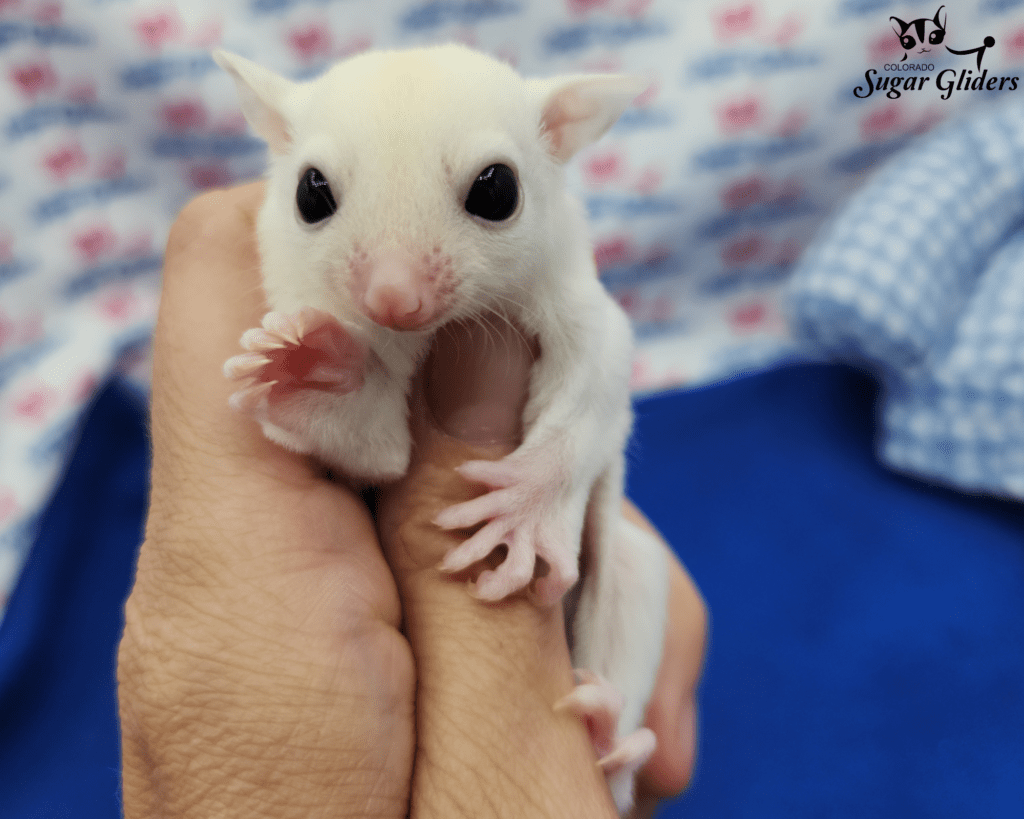
Ruby Leucistic
Ruby leucistics are pure white with red eyes. Visually, they look like how people expect albino sugar
gliders to look. In reality, it is a completely different genetic than what creates albinos. Ruby leucistics
are gliders that are visually cremino and visually leucistic, so they have the body color of a leucistic with
the eyes of a cremino. In order to produce ruby leucistics, both parents have to carry the hets for both
cremino and leucistic. Ruby leucisitics are desirable to breeders because all of their offspring will be
100% cremino and 100% leucistic het.
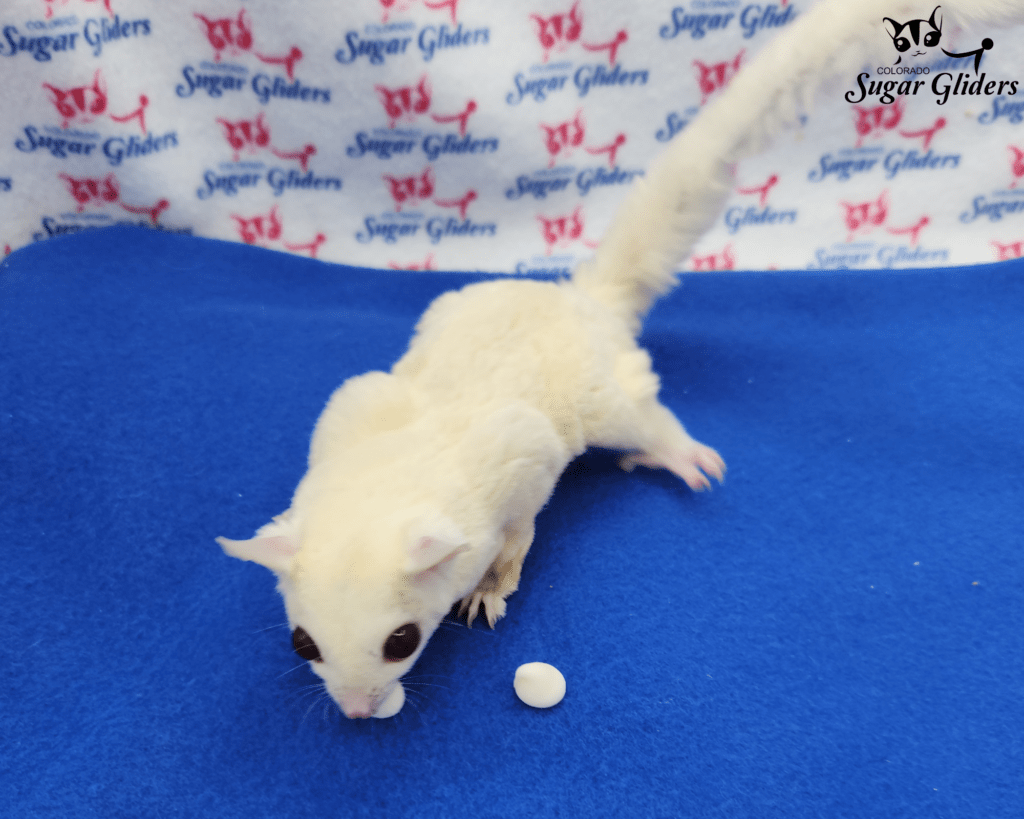
Platinum
Platinum sugar gliders are typically a light gray with slightly darker dorsal stripe and tail tip. They have
an almost silver appearance. In these gliders, the head diamond and dorsal stripe are typically more
narrow than gliders of other colors. They may also have a broken head diamond. Platinum also comes in
darker shades in which the body color may be a darker silver/gray while the dorsal stripe and tail tip are
dark gray. The different platinum lines (Silverbelle and Haley) have been crossbred so the lines are no
longer pure. Platinum can coexist with mosaic as well. We call these gliders True Platinum Mosaics. We
use this distinction because many mosaics have a lighter gray color similar to platinums and are often
misidentified. Platinum is unusual in that, while it is a recessive color, it is also dominant to the leucistic
het in a way. Platinum can use leucistic hets to produce platinum offspring, but this does not work the
other way around.
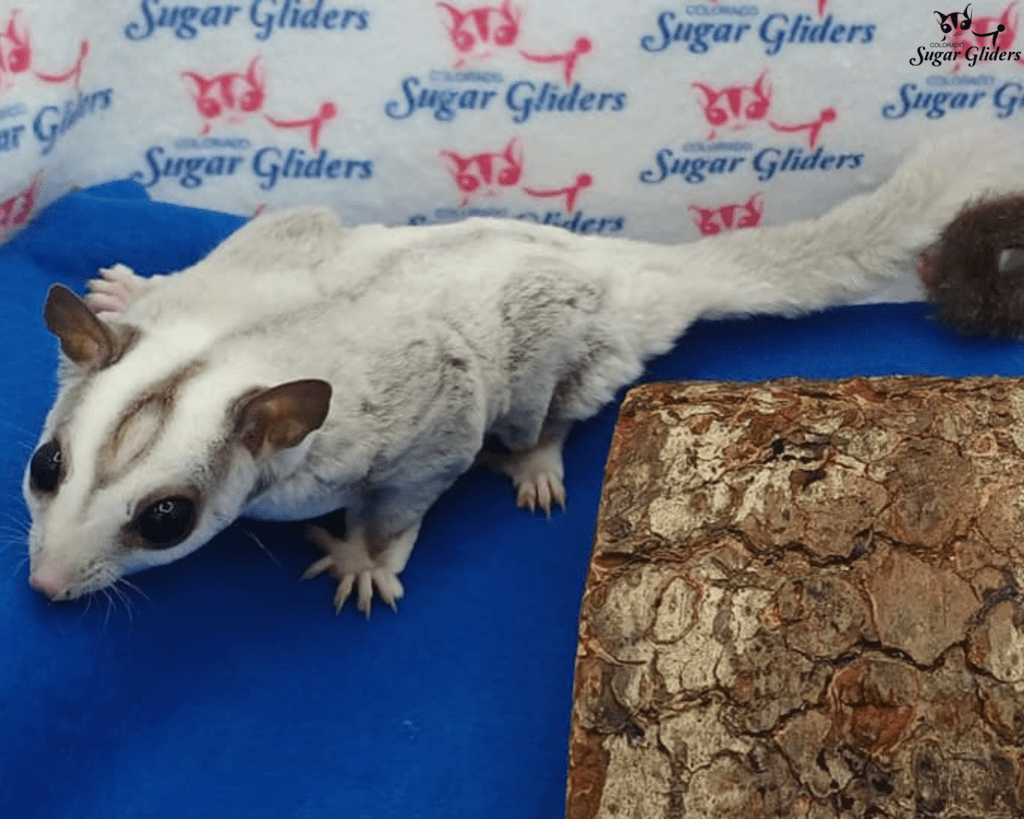
Albino
Albino sugar gliders are white or cream with a cream/yellow dorsal stripe and tail tip. Their eyes are
always red, but vary from pink to dark red. Mosaic albinos would typically be identified by having their
tail tip be their lighter body color, not the darker color of their stripe.

Carmino
Carmino sugar gliders are red or brown in color with a darker red dorsal stipe and tail tip. Depending on
the line, they can even be an almost brick red color. They usually have black eyes, but have been known to have brown or red eyes depending on the line. There are currently two lines of carmino sugar
gliders—S&S and HSG. Each line has slightly different characteristics, and the lines are not widely
compatible. Mosaic carminos will be identified by having part of their tail tip or part of their stripe be
their lighter body color, rather than the darker color that the stripe typically presents as.
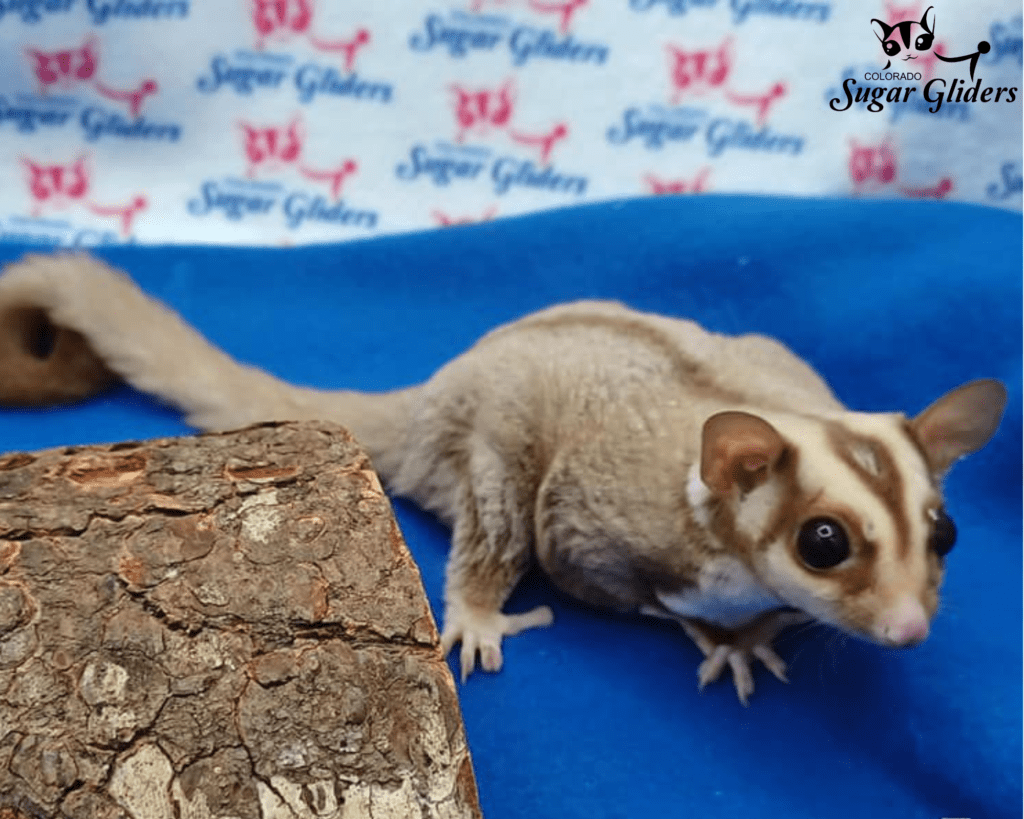
Mystery Red
Mystery red sugar gliders are another red line that are similar to carminos in appearance, but tend to be
slightly lighter and brighter in color. They have black eyes. Although they have a similar appearance to
carminos, they are not compatible with either carmino line. Mosaic mystery reds will present much the
same way as carmino and cremino mosaic traits.
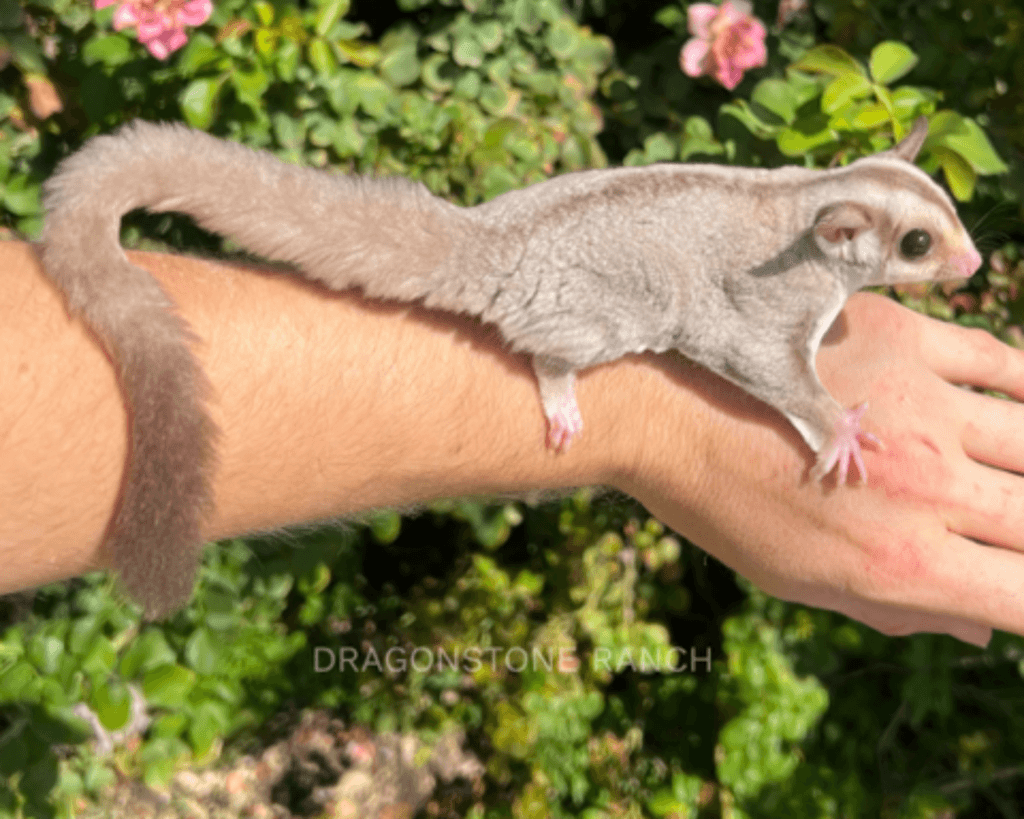
Caramel Albino
Caramel albino sugar gliders are a soft silvery red color. They often have very bright pink eyes, although
they may start out darker as babies. These gliders are not actually caramel sugar gliders. The name
caramel albino was termed before the name caramel. They have no correlation. While, in a sense,
these gliders do have a form of albinism, it is a different gene than what creates standard albino sugar
gliders. Caramel albinos and standard albinos are not compatible. Mosaic caramel albinos present
similarly to mosaic in the other recessive red gliders mentioned above.
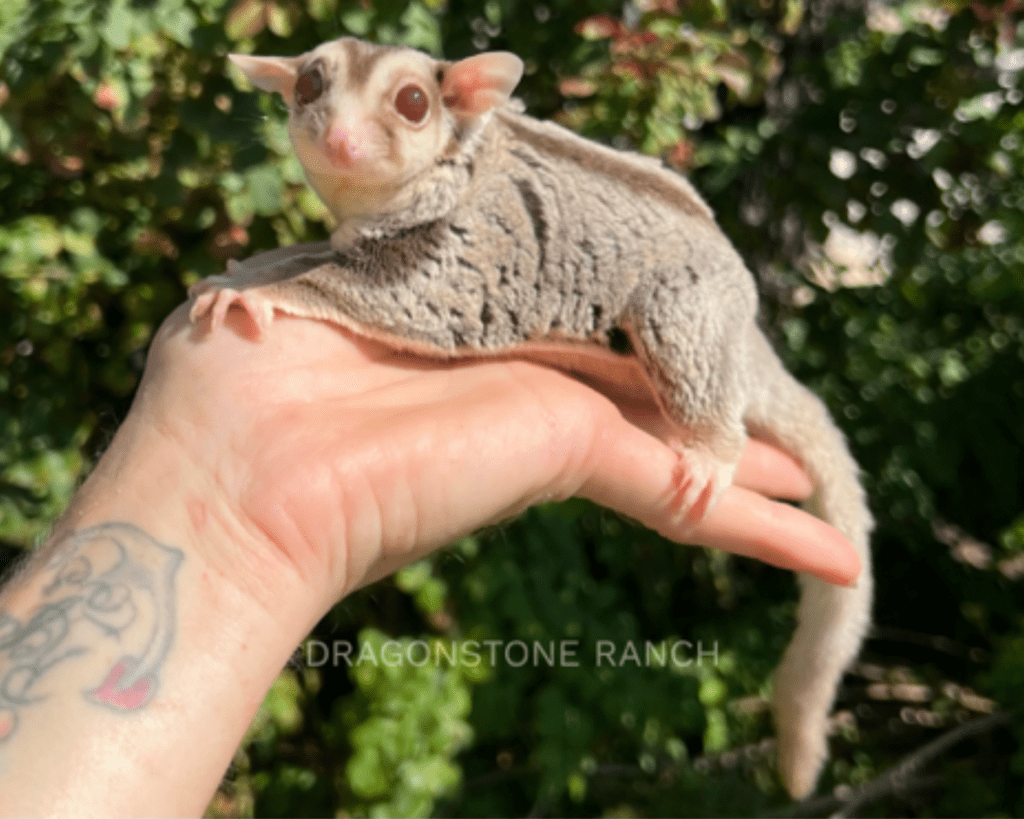
Other
There are a few other color morphs that don’t really fit into either the dominant or recessive categories.
Standard Gray
Standard gray sugar gliders have gray bodies with black dorsal stripes and tail tips. They often have dark
knuckle bars on their hands. Their bellies may be white or darker cream. Standard gray is the primary
color sugar gliders are found in the wild. They may also be called classic gray or just gray. Standard gray
sugar gliders are neither dominant or recessive. All sugar glider pairings can produce standard gray
offspring except recessive x recessive pairings. For instance, if you paired two leucistic sugar gliders
together, all they would produce is leucistic offspring. Every other type of pairing however, will produce
standard grays from time to time.
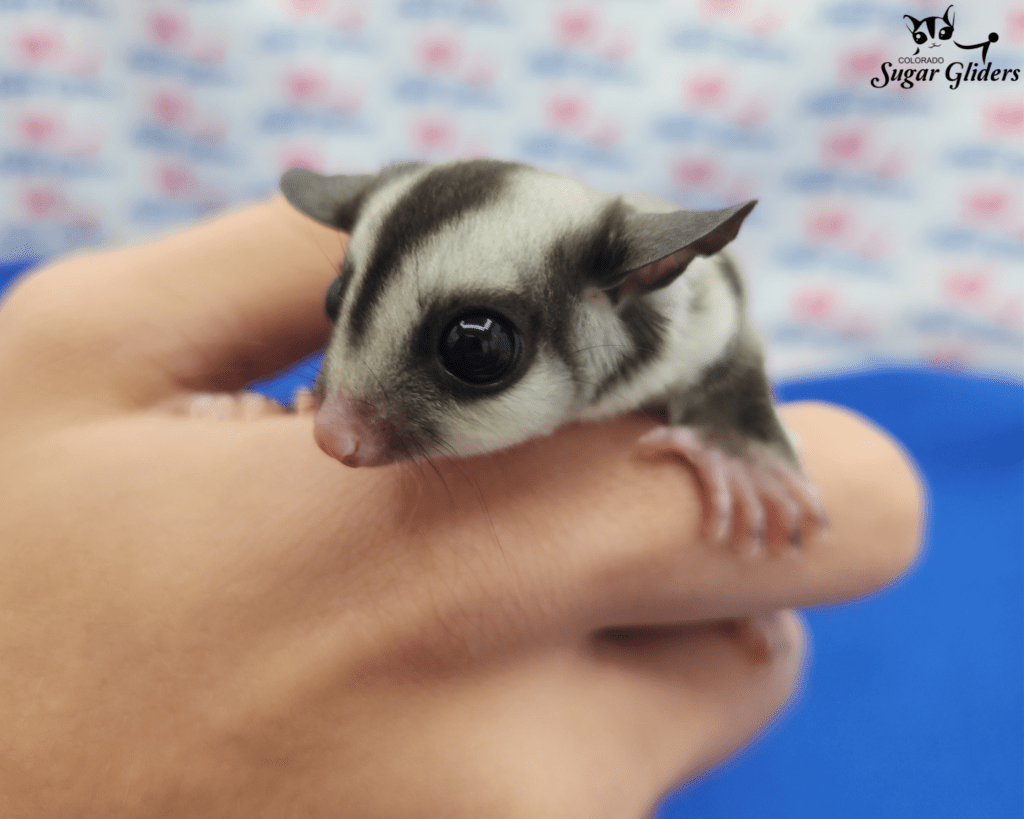
Black Beauty
Black beauty is not actually a separate color. It is just a darker variation of standard gray. Because there
aren’t specific distinctions to determine black beauties, there is a lot of variance between different breeders on what they determine is a black beauty. Typically, the dorsal stripe and tail tip will be jet
black and the gliders will have dark bars on their knuckles. Their overall body color, especially on their
face, is typically darker, and they may have darker (not white) underbellies. Because sugar gliders can
become lighter or darker with age, it is sometimes difficult to determine black beauty at a young age.
Any sugar glider pairing can produce black beauties, just as any pairing can produce standard grays.
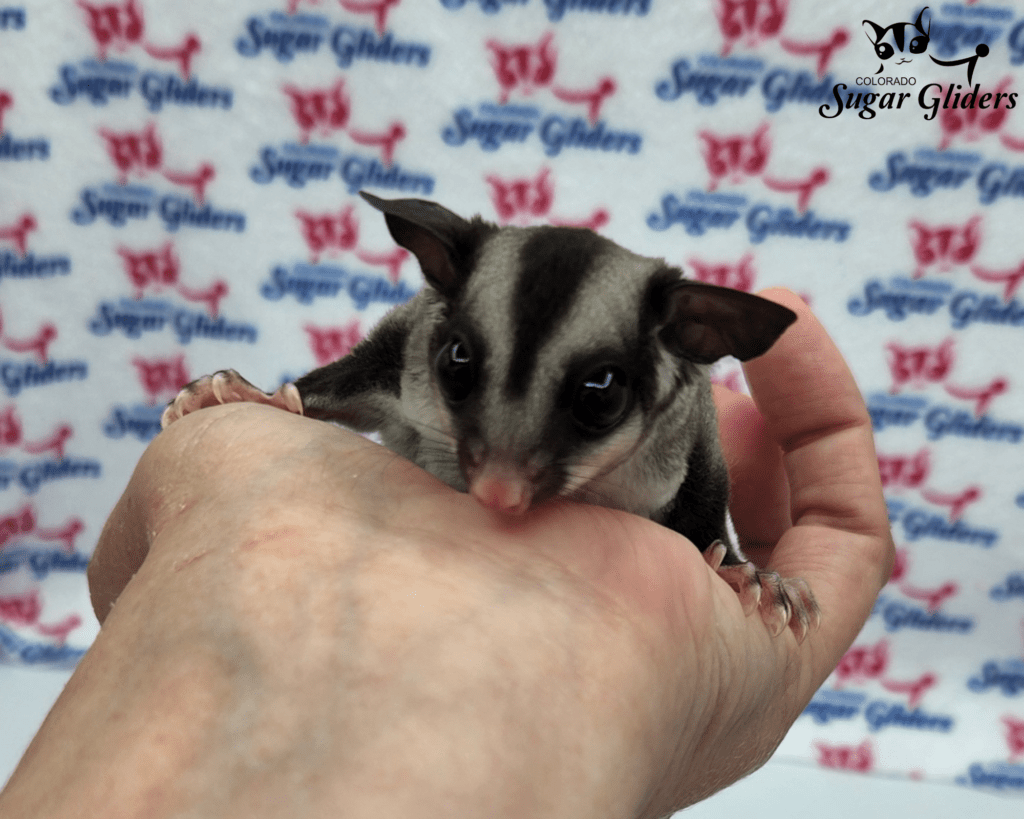
Harley Melanistic
The first thing to note is that Harley Melanistics are not true melanistics. In sugar gliders, true melanism
remains highly random and has not been able to be bred in captivity. The defining
characteristic of Harley melanistics is that they have sparse fur, especially on their tails. They were
named after Harley rats which do not have undercoats to their fur. They do typically have darker fur
and no dorsal stripe. They come from breeding two black face black beauties. Not all black face x black
face pairings will result in Harley melanistics. They are still quite rare to get. In the past, they did not
have long life expectancies. Today, with higher protein diets, they can live long healthy lives, no
different from other colors. Female Harley melanistics may be sterile at much higher rates than other
colors however. Harley melanistics have also been bred with mosaic traits.
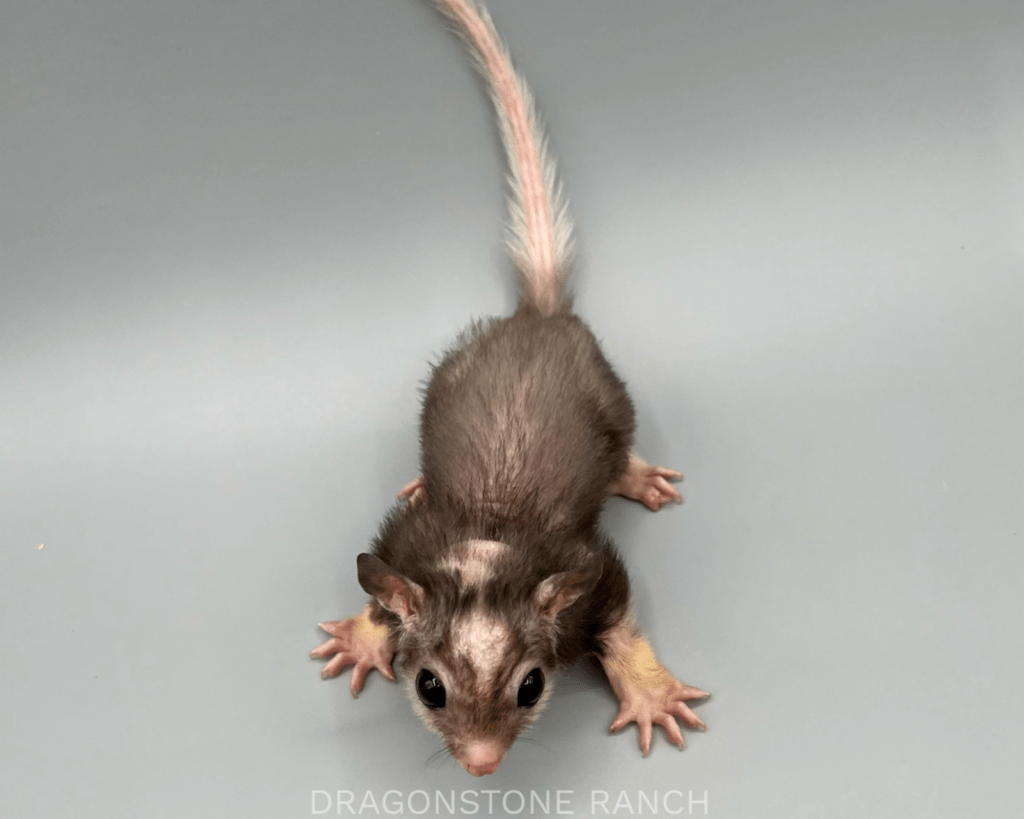
Caramel
Caramel sugar gliders are a different subspecies of sugar glider. They are similar looking to standard
gray sugar gliders, but are more of a brown color. They are also slightly larger than other varieties of
sugar gliders and are more docile. They cannot be bred to other types of sugar gliders as this will result
in sterile offspring.
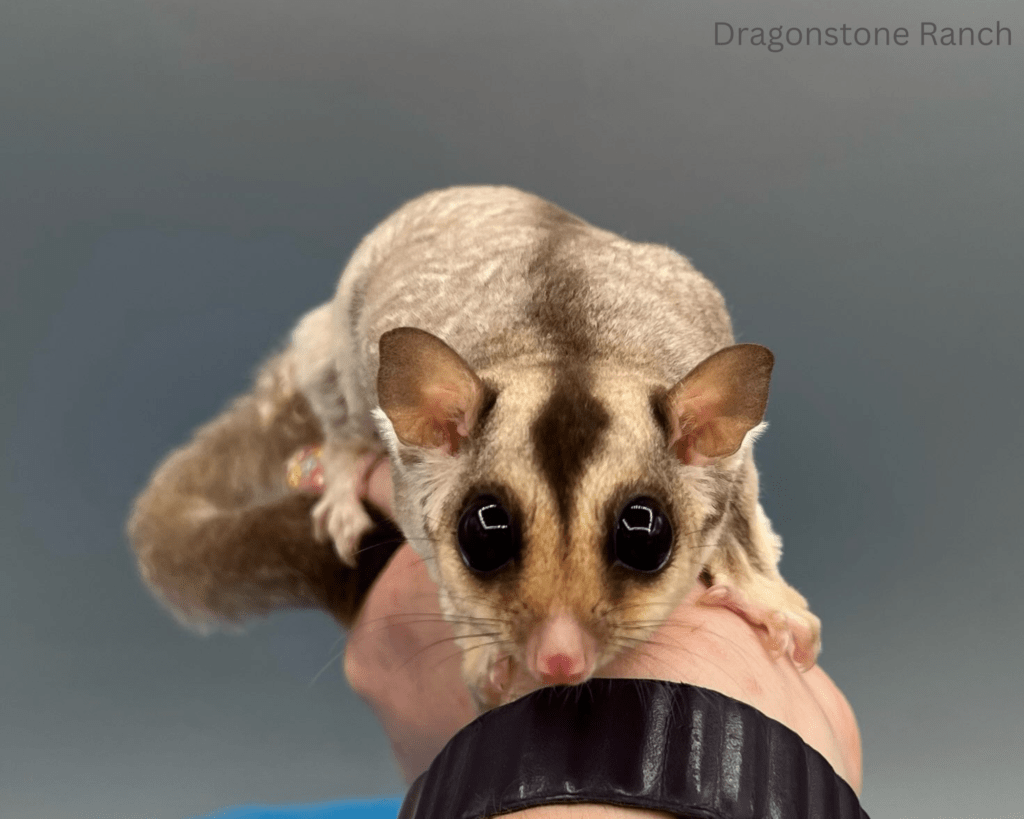
Red Tinted/Red
Red tint can affect many colors—standard gray, white face, mosaic, black face black beauty, even
platinum. It is what its name suggests—a red tint to the normally gray fur. This may be quite obvious,
or a little more subtle. Red tinted sugar gliders also may have red centered eyes. Sometimes, the red in
the eyes may be visible when they are young and then go away as they get older, or may only be visible
with a flash. The red tint comes from carrying the cremino het. Not all gliders who carry the cremino
het are red tinted, but red tinted lines tend to produce more red tinted offspring. Overall however, red
tint is a random trait. Sometimes, the very obviously tinted ones are just referred to as ‘red’ where the
more subtle ones are referred to as ‘red tinted’. However, the terms really are synonymous. These
gliders are often called “crème het reds” as a way to differentiate them from the recessive red lines such
as carmino and mystery red.
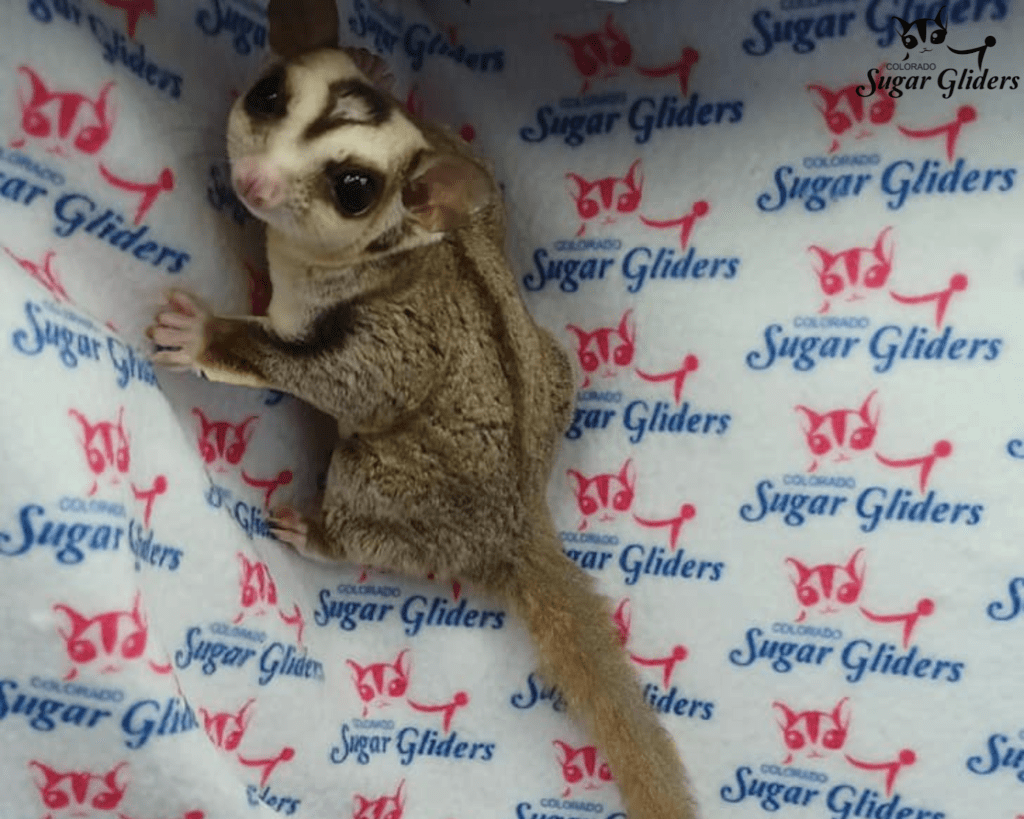
Start the search for your Glider!
We will discuss the process in more detail and get you started on the road to owning your first Sugar Gliders.
